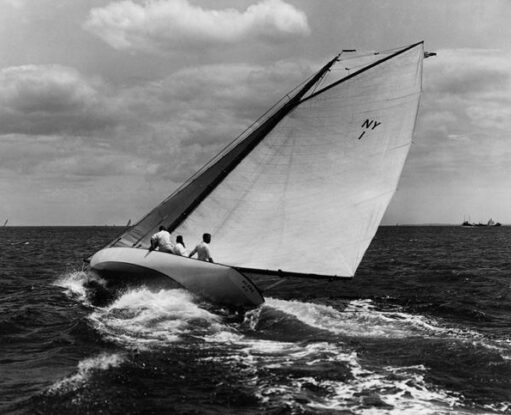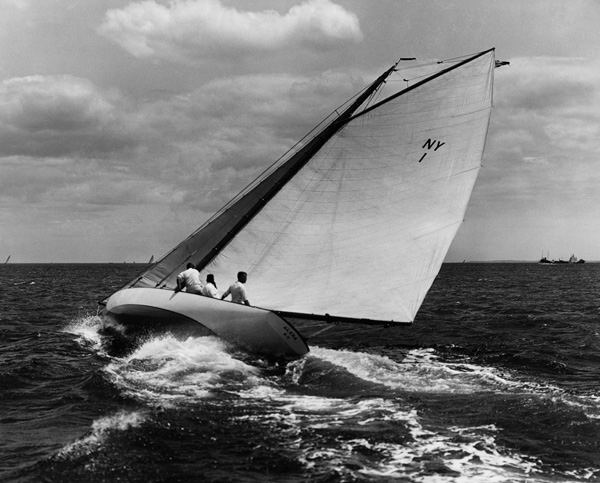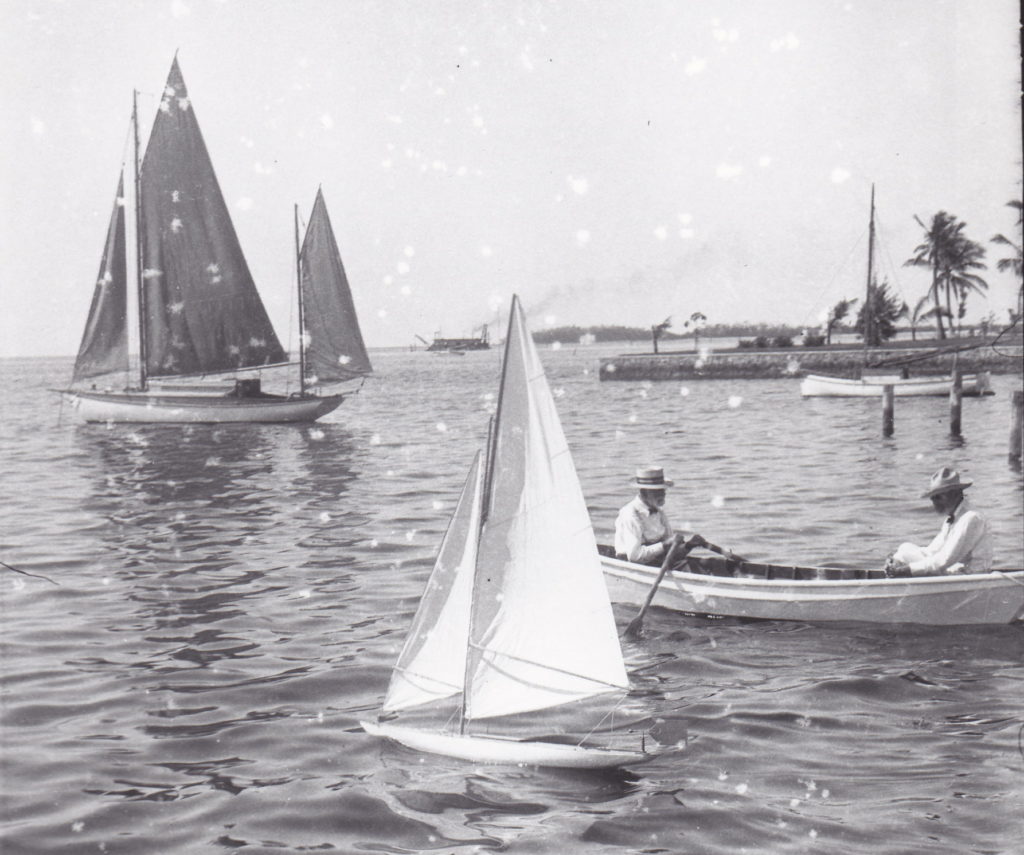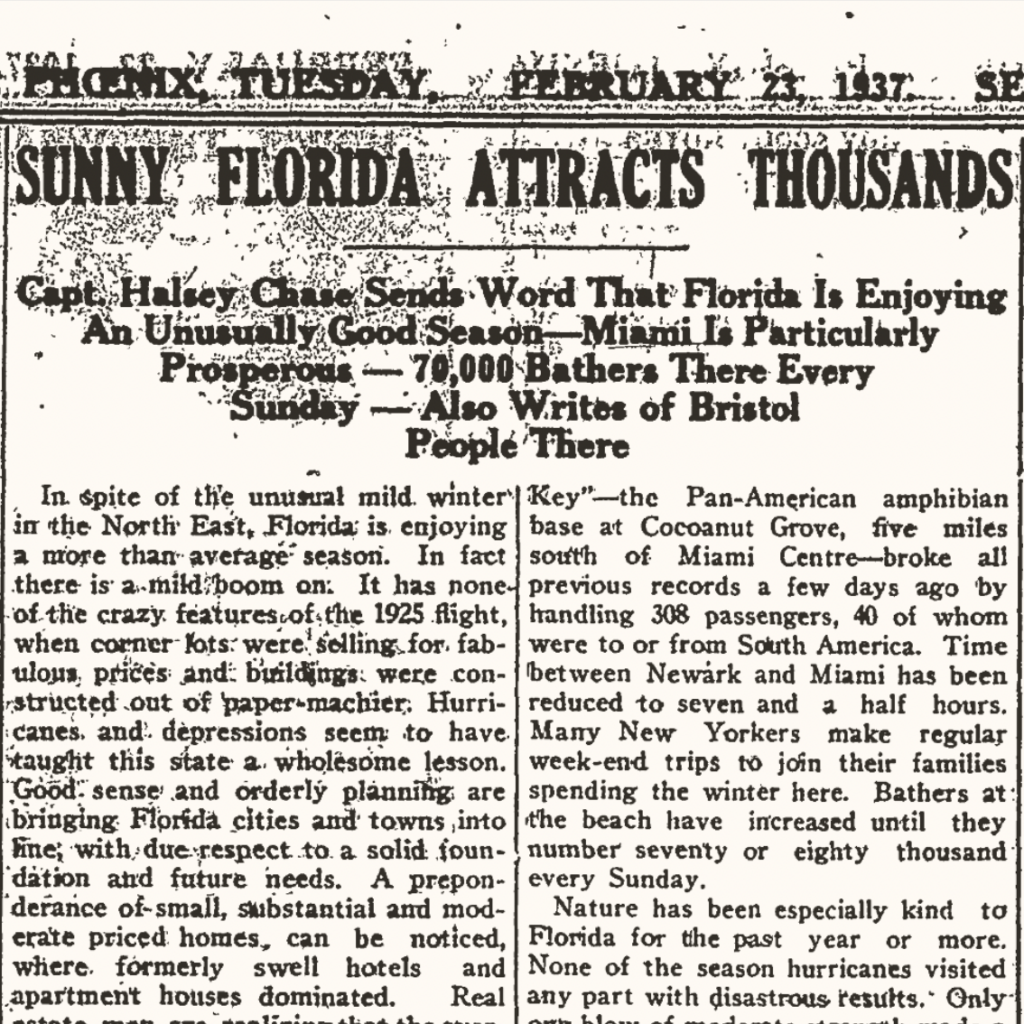February 25, 2021
This Week in Herreshoff History: February 25
Ice boats for the Arctic and for home, eighteen New York 30s, dispatches from Cocoanut Grove and a report from the local chapter of the Girl Scout Mariners

February 23, 1884

The Bristol Phoenix reports that two launches have been ordered for the Greely Relief Expedition, and that HMCo. has "recently only been running 8 hours per day" but are back up to full-time employment. We are reminded to be grateful for our 40 hour work week! You can read more about the Greely Expedition and these launches in a previous From the Vault post. The Greely Relief whaleboats THETIS (HMCo. #108) and CUB (HMCo. #109) were both outfitted with extra keels to serve as runners as they were propelled along the ice, and though it does not show on the original construction drawing, "A small shaft projected beyond the bow, armed with a circular serrated contrivance connected with the engine, grappling the smooth ice fields and furnishing means for rapid locomotion..." according to one report in the Boston Globe published in July of 1884. Two other launches were also built to the same half model in 1884 (HMCo. #114) and 1885 (HMCo. #131), both for the U.S. Coast Survey. Interestingly, a 1907 piece in the Phoenix describes a similarly novel iceboat propelling device (coupled with a gasoline engine instead of steam) demonstrated by Nathanael Jr. and Griswold Herreshoff on Bristol Harbor more than two decades later. The combustion engine may have solved one of the chief criticisms of the Greely Relief launches, which was that their steam engines were temperamental and difficult to operate in arctic conditions.

February 25, 1905

The New York 30 LINNET (HMCo. #636) was launched on this day - a Saturday - 116 years ago. Her sister, CARA MIA (HMCo. #639) was turned over on the same day, according to Captain Nat's diaries. It was a particular feature of HMCo. construction that vessels were framed and planked upside down before being rolled and set atop the keel before deck and interior came together. This is fairly common for small boats outside of HMCo., but the Herreshoff method used this construction technique for larger yachts as well. It was extremely efficient and made for very rapid planking of hulls at the manufacturing company. Indeed, 18 New York 30s were launched between January 3rd (ALERA, HMCo. #626) and May 6th (ANEMONE, HMCo. #647) that year. These were no dinghies, at 43'6" LOA!
February 28, 1928 and February 23, 1937
The Bristol Phoenix prints two dispatches from Cocoanut Grove, eleven years apart. Both are letters from Bristol local Captain Halsey Chase (Rebecca Chase Herreshoff's father), describing life in the warmer climes. In each, Captain Chase mentions Captain Nat's involvement with the Cocoanut Grove Yacht Club and gives updates on the dinghy races. Captain Nat spent many winters in Cocoanut Grove during his later years, and continued to sail actively throughout his 80s.

February 25, 1938
Miss Agnes and Mrs. Sidney Herreshoff are both quite involved with the local Girl Scout Mariners troop, the local chapter being known as the Mariner Ship Vigilant, according to the Bristol Phoenix. Agnes was the chairman of the Pilot Committee, and Becky's official title was "Skipper". The winter meetings consist of outdoor hikes and screenings of film from previous summer's cruises. Plans for two months of cruising in one week sessions the following summer were announced, aboard Captain Irving and Exy Johnson's YANKEE, lately returned from a circumnavigation. You can learn more about this pioneering couple and their history of youth sail training here.


